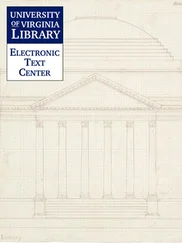Vince Houghton - Nuking the Moon - And Other Intelligence Schemes and Military Plots Left on the Drawing Board
Здесь есть возможность читать онлайн «Vince Houghton - Nuking the Moon - And Other Intelligence Schemes and Military Plots Left on the Drawing Board» весь текст электронной книги совершенно бесплатно (целиком полную версию без сокращений). В некоторых случаях можно слушать аудио, скачать через торрент в формате fb2 и присутствует краткое содержание. Город: New York, Год выпуска: 2019, ISBN: 2019, Издательство: Penguin Books, Жанр: История, Юмористические книги, на английском языке. Описание произведения, (предисловие) а так же отзывы посетителей доступны на портале библиотеки ЛибКат.
- Название:Nuking the Moon: And Other Intelligence Schemes and Military Plots Left on the Drawing Board
- Автор:
- Издательство:Penguin Books
- Жанр:
- Год:2019
- Город:New York
- ISBN:978-0-5255-0517-4
- Рейтинг книги:4 / 5. Голосов: 1
-
Избранное:Добавить в избранное
- Отзывы:
-
Ваша оценка:
- 80
- 1
- 2
- 3
- 4
- 5
Nuking the Moon: And Other Intelligence Schemes and Military Plots Left on the Drawing Board: краткое содержание, описание и аннотация
Предлагаем к чтению аннотацию, описание, краткое содержание или предисловие (зависит от того, что написал сам автор книги «Nuking the Moon: And Other Intelligence Schemes and Military Plots Left on the Drawing Board»). Если вы не нашли необходимую информацию о книге — напишите в комментариях, мы постараемся отыскать её.
Nuking the Moon: And Other Intelligence Schemes and Military Plots Left on the Drawing Board — читать онлайн бесплатно полную книгу (весь текст) целиком
Ниже представлен текст книги, разбитый по страницам. Система сохранения места последней прочитанной страницы, позволяет с удобством читать онлайн бесплатно книгу «Nuking the Moon: And Other Intelligence Schemes and Military Plots Left on the Drawing Board», без необходимости каждый раз заново искать на чём Вы остановились. Поставьте закладку, и сможете в любой момент перейти на страницу, на которой закончили чтение.
Интервал:
Закладка:
But what about this program in particular? Surely nuking the moon just for the public relations win would stretch the limits of what even the most patriotic scientists would willingly accept.
You’d be surprised.
Whether these were serious considerations, or just ways to justify their actions, many of those involved in Project A119 cited the potential for real and important scientific discovery that could come out of detonating a nuclear weapon on the surface of the moon. These were exciting times, with the potential to explore new frontiers of science. Carl Sagan, the man who would dedicate his life to searching for evidence of life on other worlds, thought this could be a great way to try and identify the presence of microbes or organic molecules on the moon (this is when we still thought there might be something up there besides dust). Others envisioned experiments centered on lunar chemistry, or the thermal conductivity of the lunar surface. Reiffel’s team also wondered if the nuclear blast would produce enough seismic activity to evaluate the makeup of the moon’s immediate subsurface structure. According to Reiffel, “A central theme, which runs through many of the projected experimental situations, envisions placing of a maximum of three identical instrument packages at arbitrary locations on the visible face of the moon prior to any possible nuclear detonation. These instrument packages would be equipped to make a variety of measurements.”
There were also serious fears that the Soviets would blow up a part of the moon before we got the chance to do it ourselves. On November 1, 1957, United Press International sent out a wire report that claimed that the Soviets planned to detonate a hydrogen bomb on the moon on or about November 7. Headlined “Latest Red Rumor: They’ll Bomb Moon,” the article states that a “fellow” told UPI he talked to “a guy ‘high in U.S. intelligence’” who said that the Soviets were timing the launch to coincide with the November 7 fortieth anniversary of the Bolshevik Revolution. Although the article exclaimed, “If that’s true—look out!” it also warned that the rocket carrying the nuke was just as likely to miss the moon entirely and boomerang back to Earth. “If the rocket contained an H-bomb,” the article surmised, “the best hope of earth would be that the whole thing would burn up harmlessly in the atmosphere before it impacted, as the missile men say.”
No one is really sure where this rumor started, but it is indicative of the kind of panic in the United States in the wake of the launch of Sputnik.
Now to the most important question: Would this work?
First, let’s get the basics out of the way. By 1959, the Soviet Union had already crashed a probe into the moon. The United States followed this less than three years later with a kamikaze probe of their own. So, in a general sense, the world knew that launching something on a rocket and sending it to the surface of the moon was feasible. We still don’t know some of the specific technical details of early American ballistic missile technology (some things are still classified), but during an interview Reiffel gave later in life, he insisted we had the capability to hit a target on the moon with an accuracy of within two miles. That’s pretty good, given that the Moon has a diameter of 2,159 miles.
So we’ve got that going for us, which is nice.
So that leaves us with the most important question: How insanely cool would the mushroom cloud on the moon look? You’d want to detonate the bomb on the edge (known as the terminator) of the dark side of the Moon, so that the sun’s light would silhouette the trademark mushroom cloud from behind. It would be totally rad.
Except… that wouldn’t happen.
Mushroom clouds from a nuclear explosion are caused by the movement of dust and debris kicked up in a dense atmosphere. The explosion also releases a massive amount of heat very rapidly, which interacts with the cooler surrounding air and makes it less dense. (You don’t need a nuclear explosion to make a mushroom cloud. Really anything that causes a rapid release of heat, like a volcano or even a major forest fire, can cause a mushroom cloud to form.) The hot air in the center of the blast rises, creating a vacuum that is immediately filled by the surrounding air (which also expands and starts to rise). Eventually the rising air runs smack into the air on top of it, which had been just hanging around in the atmosphere—like on any normal day—helping birds and planes fly. The atmospheric air pushes down on the rising column of smoke, dust, debris, superheated and not-so-superheated air and flattens out the top. Smush, a mushroom cloud.
Then we have to factor back into the equation the atmospheric air. A lot of it is busy applying pressure to the top of the cloud, but some of it doesn’t have much choice and gets blown out of the way by the rapidly rising heat. This air, which is at much lower temperature than the air in the center column, does what cooler air does: It descends. But it doesn’t get far. The cooler air gets sucked back into the vacuum created by the explosion, and back up again it goes. This is why you see that swirly pattern at the edges of a mushroom cloud.
The moon, however, is essentially a vacuum already. It has some gases hanging around on its surface, but it really doesn’t have an atmosphere like we do on Earth. Without the weight of a dense atmosphere, there would be no resistance to the expansion of the nuclear-produced dust and debris. They would just keep on going and going, instead of curling back to the surface. No big plume, no sound or shock wave, no smush, and no mushroom cloud. Just a lot of dust.
This doesn’t mean there wouldn’t be a hell of a show. The people of Earth would see a visible flash from the detonation. And maybe the sun would shine through the dust and debris in such a way as to give the world a pretty view.
But it’s really not the same.
AND THEN WHAT?
You might have noticed I skipped over the when, how, and why this program was ultimately scrapped. It’s not because we don’t know the when; we do: January 1959. It’s not because we don’t know the how; we also do: The U.S. Air Force decided it was time to mothball Project A119.
The reason I waited until now to discuss the cancellation of the program—and part of what makes it so fascinating—is I’ve yet to see anyone provide a convincing reason for why it was canceled. Multiple sources have weighed in. All are operating on speculation. There’s a lot of using words like “apparently” and “seemingly” in references to the end of the project. Apparently the Air Force canceled the program because of the potential danger to people on Earth (in case the mission catastrophically failed the way so many of the early U.S. attempts at spaceflight sadly—and sometimes humorously—failed). Apparently the scientists were concerned about contaminating the moon with radioactive material, preventing any future mission to land a man on the surface (or even lunar colonization). The mission was scrapped seemingly out of a worry that the best-laid PR plans of the Air Force would be thwarted when the public saw this as an abhorrent defacement of the moon’s beauty instead of a demonstration of American scientific prowess. Maybe we realized landing a man on the moon was possible, and more impressive?
Who the hell knows? If Reiffel did, he wasn’t telling.
When Reiffel went public and acknowledged his role on the project in 2000, he also claimed he didn’t know the precise reason for the cancellation of the project. But that didn’t stop him from providing his own speculation:
As these things go, this was small. It was less than a year and never got to the point of operational planning. We showed what some of the effects might be. But the real argument we made, and others made behind closed doors, was that there was no point in ruining the pristine environment of the moon. There were other ways to impress the public that we were not about to be overwhelmed by the Russians.
Читать дальшеИнтервал:
Закладка:
Похожие книги на «Nuking the Moon: And Other Intelligence Schemes and Military Plots Left on the Drawing Board»
Представляем Вашему вниманию похожие книги на «Nuking the Moon: And Other Intelligence Schemes and Military Plots Left on the Drawing Board» списком для выбора. Мы отобрали схожую по названию и смыслу литературу в надежде предоставить читателям больше вариантов отыскать новые, интересные, ещё непрочитанные произведения.
Обсуждение, отзывы о книге «Nuking the Moon: And Other Intelligence Schemes and Military Plots Left on the Drawing Board» и просто собственные мнения читателей. Оставьте ваши комментарии, напишите, что Вы думаете о произведении, его смысле или главных героях. Укажите что конкретно понравилось, а что нет, и почему Вы так считаете.











